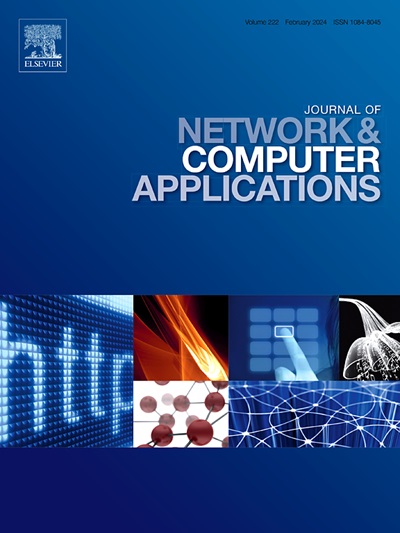Optimizing disaster response with UAV-mounted RIS and HAP-enabled edge computing in 6G networks
IF 8
2区 计算机科学
Q1 COMPUTER SCIENCE, HARDWARE & ARCHITECTURE
引用次数: 0
Abstract
In the context of disaster response and recovery within 6th Generation (6G) networks, achieving both low-latency and energy-efficient communication under compromised infrastructure remains a critical challenge. This paper introduces a novel framework that integrates a solar-powered High-Altitude Platform (HAP) with multiple Unmanned Aerial Vehicles (UAVs) equipped with Reconfigurable Intelligent Surfaces (RISs), significantly enhancing disaster response capabilities. A hybrid approach combining game theory and multi-agent reinforcement learning (MARL) is employed to optimize UAV energy management, RIS control, and the offloading data rates of ground devices (GDs). Specifically, game theory is used to determine optimal task offloading decisions, balancing energy consumption, latency, and computational efficiency, while MARL dynamically guides UAV trajectories and RIS configurations to maintain robust communication links. A key innovation is the RIS ON/OFF mechanism, which conserves energy by switching OFF RISs when not needed, allowing UAVs to recharge during inactive periods and extending operational lifetimes. The proposed framework also demonstrates superior performance in optimizing offloading data rates and minimizing task offloading costs, ensuring efficient resource utilization. Extensive simulations validate the effectiveness of this approach, showing significant improvements in energy efficiency, data processing performance, and overall network reliability compared to traditional methods. These advancements contribute to more reliable and energy-efficient disaster response operations within 6G networks.
在6G网络中,利用无人机安装的RIS和启用hap的边缘计算优化灾难响应
在第六代(6G)网络的灾难响应和恢复背景下,在受损基础设施下实现低延迟和节能通信仍然是一个关键挑战。本文介绍了一种新型框架,该框架将太阳能高空平台(HAP)与配备可重构智能表面(RISs)的多架无人机(uav)集成在一起,显著提高了灾害响应能力。采用博弈论和多智能体强化学习(MARL)相结合的混合方法对无人机能量管理、RIS控制和地面设备卸载数据速率进行优化。具体来说,博弈论用于确定最佳任务卸载决策,平衡能耗、延迟和计算效率,而MARL动态引导无人机轨迹和RIS配置以保持稳健的通信链路。一项关键的创新是RIS的ON/OFF机制,该机制通过在不需要时关闭RIS来节省能量,允许无人机在非活动期间充电并延长使用寿命。该框架在优化卸载数据速率和最小化任务卸载成本方面也表现出优异的性能,确保了资源的有效利用。大量的仿真验证了这种方法的有效性,与传统方法相比,在能源效率、数据处理性能和整体网络可靠性方面有了显著的改进。这些进步有助于在6G网络中实现更可靠、更节能的灾难响应操作。
本文章由计算机程序翻译,如有差异,请以英文原文为准。
求助全文
约1分钟内获得全文
求助全文
来源期刊

Journal of Network and Computer Applications
工程技术-计算机:跨学科应用
CiteScore
21.50
自引率
3.40%
发文量
142
审稿时长
37 days
期刊介绍:
The Journal of Network and Computer Applications welcomes research contributions, surveys, and notes in all areas relating to computer networks and applications thereof. Sample topics include new design techniques, interesting or novel applications, components or standards; computer networks with tools such as WWW; emerging standards for internet protocols; Wireless networks; Mobile Computing; emerging computing models such as cloud computing, grid computing; applications of networked systems for remote collaboration and telemedicine, etc. The journal is abstracted and indexed in Scopus, Engineering Index, Web of Science, Science Citation Index Expanded and INSPEC.
 求助内容:
求助内容: 应助结果提醒方式:
应助结果提醒方式:


